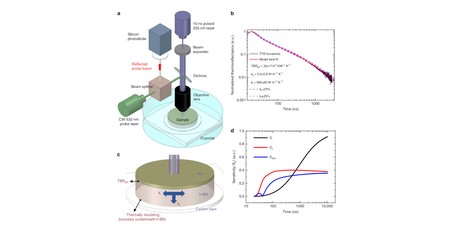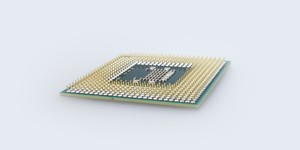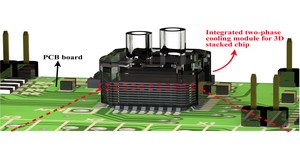Researchers boast of boron nitride cooling breakthrough
May 3, 2019 | 10:33
Companies: #university-of-bristol

Researchers at the University of Bristol have published the first results proving the high thermal conductivity of boron nitride, promising that the breakthrough could lead to more reliable, higher-performance electronics.
A computer is, in effect, a very complicated space heater: The overwhelming majority of the energy that goes into it comes out in the form of heat, alongside the zeros and ones that make Doomguy move or a YouTube video play. As performance increases and component sizes shrink, handling this heat is a challenge - which is why researchers have been looking to move away from silicon to more esoteric materials for future semiconductors.
One of these materials is boron nitride, which had a theoretically high thermal conductivity - the rate at which it can transfer heat - which was sadly unproven in the lab. A team of researchers led by Professor Martin Kuball at the University of Bristol's Centre for Device Thermography and Reliability (CDTR), though, has finally managed to prove its capabilities, creating an ultra-pure version of boron nitride which has a thermal conductivity measured at 550 watts per meter-Kelvin (550W/mK) - around twice that of copper.
'Most semiconductor electronics heat up when used. The hotter they get, the greater the rate at which they degrade, and their performance diminishes,' Professor Kuball explains. 'As we rely more and more upon our electronic devices, it becomes increasingly important to find materials with high thermal conductivity which can extract waste heat. Boron nitride is one such material which was predicted to have a thermal conductivity of 550W/mK, twice that of copper. However, all measurements to date seemed to show its thermal conductivity was much lower. Excitingly, by making this material "ultra-pure" we have been able to demonstrate for the first time its very high thermal conductivity potential.
'In demonstrating the potential of ultra-pure Boron nitride, we now have a material that can be used in the near future to create high performance, high energy efficiency electronics. The implications of this discovery are significant. Certainly, our reliance on electronics is only going to increase, along with our use of mobile phones and adoption of electric cars. Using more efficient materials, like Boron nitride, to satisfy these demands will lead to better performance mobile phone communication networks, safer transportation and ultimately, fewer power stations.'
Kuball's work echoes that of teams at the University of Texas at Dallas, the University of Illinois at Urbana-Champaign, and the University of Houston, who have been investigating the closely-related boron arsenide and in July 2018 claimed to have a material reaching 1,000W/mK thermal conductivity in the lab.
The team's research paper, 'Modulating the thermal conductivity in hexagonal boron nitride via controlled boron isotope concentration' is available now under open access in the journal Communications Physics.

MSI MPG Velox 100R Chassis Review
October 14 2021 | 15:04








Want to comment? Please log in.